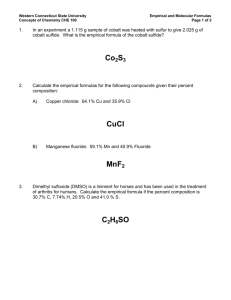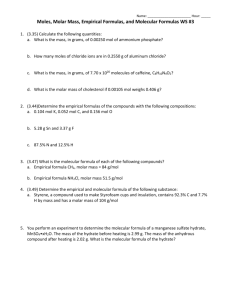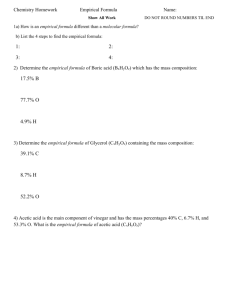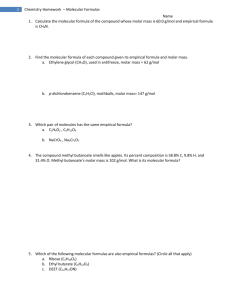Molecular Formula
advertisement
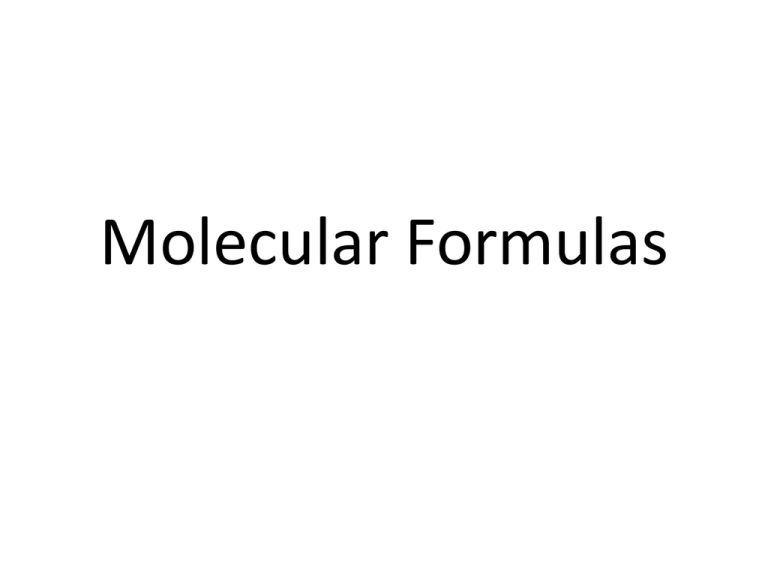
Molecular Formulas • How can two different substances have the same empirical formulas? CH Acetylene Gas used in welding CH Benzene Liquid Molecular Formula • Tells the actual number of atoms in a compound HO H₂O₂ How can you find the molecular formula from empirical formula? A few steps… 1. Divide experimental molar mass by mass of empirical formula Molar mass of acetylene = 26.04 g/mol Empirical formula = CH C = 12.01 H = 1.01 CH = 13.02 26.04/13.02 = 2 • Because the molar mass of acetylene was 2 times the mass of the empirical formula, the molecular formula must contain twice the amount of C and H represented in empirical formula A few steps… 2. Multiply the subscripts by amount from step 1 amount = 2 CH A few steps… • Use the subscripts to write the molecular formula C₂H₂ Remember • The molecular formula is a whole number multiple of the empirical formula HO H₂O₂ Practice • A molecule of nicotine contains 74.0% C, 8.65% H, and 17.35% N. The molar mass of nicotine is 162.26 g/mol. What is the empirical and molecular formula of nicotine? 1. Convert mass to moles • Divide mass by molar mass • 74.0g / 12.01 g/mol = 6.16 mol C • 8.65g / 1.01 g/mol = 8.56 mol H • 17.35g / 14.01 g/mol = 1.24 mol N 2. Divide all by smallest mole # • 6.16 mol C / 1.24 = 4.97 • 8.56 mol H / 1.24 = 6.90 • 1.24 mol N / 1.24 = 1 Round to nearest whole number and write empirical formula C₅H₇N • Experimental molar mass = 162.26 • Find molar mass of empirical formula 5(12.01) = 60.05 7(1.01) = 7.07 1(14.01) = 14.01 81.13 Divide experimental molar mass by molar mass of empirical formula • 162.26/81.13 = 2 Multiply subscripts by 2 to get molecular formula C₅H₇N

